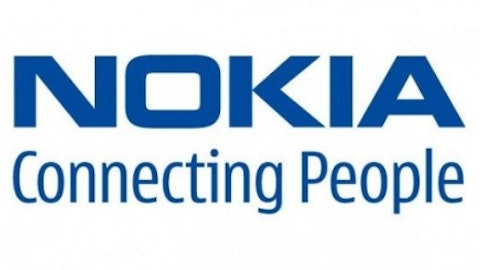The price to sales ratio is one of my favorite metrics to quickly determine whether a stock is potentially over or under valued. The price to sales ratio (PSR) became popular when it was first introduced by Kenneth Fisher in his wonderful book – Super Stocks (a book I highly recommend). For those not familiar with the ratio, it’s simply a company’s market cap divided by revenue (trailing twelve months).
Why do I like it so much….? I believe it’s a much better indicator of valuation because revenue (as opposed to earnings in the P/E ratio) is much harder to manipulate. Yes, I understand that revenue can also be manipulated, but not as easily as bottom line profits. As with any ratio, it should be accompanied with a check of earnings quality, cash flows, etc.

A deeper look – While a powerful ratio, using PSR as a static number can be very misleading and counterproductive. Many investors will screen for low PSRs (say less than 1x revenue). Although valid as a starting point, it completely ignores a company’s operating leverage potential. Comparing companies on a PSR basis may lead to an apples to oranges comparison. This is why I always incorporate a company’s normalized operating margins relative to its price to sales. My calculation = price / sales / normalized operating margin.
Let’s use a few example and attempt to draw some conclusions about valuations. I’ll be looking at three different companies in the tech sector; Microsoft Corporation (NASDAQ:MSFT), Akamai Technologies, Inc. (NASDAQ:AKAM), and NetApp Inc. (NASDAQ:NTAP). Although all companies are in the technology arena, they are all in different industries with very different operating structures. The results of the PSR / Sales / Operating margin calculation are MSFT = 8.9, AKAM = 23.1, and NTAP=15.6. The following chart allows us to compare:
Price to Sales Ratio 3 Year Oper Margin PSR to Oper Margin
Microsoft 3.1X 34.5% 8.9
Akamai Tech 5.6X 24.2% 23.1
NetApp 2.1X 13.5% 15.6
For example, we can easily observe MSFT’s valuation relative to NTAP. While MSFT trades at a loftier PSR of 3.1X, its normalized operating margin is almost three times that of NTAP. Thus, MSFT is a cheaper option, in my opinion.
Microsoft Corporation (NASDAQ:MSFT) is well known for its dominance in PC operating systems. Their 90% market share of desktops has consistently generated operating margins north of 30% – even as PC sales have been dormant. MSFT has maintained this market share for almost two decades – which is unbelievable. This tremendous cash cow has allowed the company entry into other markets with mixed results. However, it’s pretty clear that they should be able to sustain high margins (at least in the near term). A reading of 8.9 is a very attractive valuation for this type of business.
Akamai Technologies, Inc. (NASDAQ:AKAM) has also been a dominant player in its field. The company provides content delivery infrastructure/services for transmission over the internet. It’s been known as the backbone on the internet. As a leader in their space, they’ve been able to maintain high margins in a fast growing industry. But the combination of high growth and high margins eventually brought fierce competition. This ultimately leads to pricing issues – which may lead to deteriorating margins. In fact, although AKAM is a wonderfully profitable company, margins may be already contracting. Higher spending on R&D as a percentage of sales will be necessary to maintain share leadership. A reading of 23.1 is too pricey for me for this uncertainty.
Lastly, NetApp Inc. (NASDAQ:NTAP) is in the storage business. The storage business has experienced price compression over the past decade. While the need for storage has grown exponentially, it seems that the cost for that storage has declined almost as fast. It requires constant innovation to stay ahead of the pricing curve and NTAP has done an admirable job defending its turf. However, margins will eventually suffer in this type of environment – no matter how fast the industry is growing. With this in mind, a reading of 15.6 is more than I’m willing to pay.
A quick recap – based on my expanded PSR to operating margin metric, I consider MSFT to be attractively valued given its consistently high margin structure. While both AKAM and NTAP are more vulnerable (and potentially over-priced) given their competitive markets and uncertain margin trends.
A few caveats to remember; first it’s important to use a normalized operating margin over at least a three or five year period. A company with an unusual jump in margins may lead to a misleading conclusion. Secondly, one must feel relatively confident that a company can maintain that operating margin in the future. Deteriorating margins will almost always lead to lower stock prices. Lastly, any static measure such as this doesn’t account for future growth prospects.
Price to Sales is a useful metric, but should never be used on a stand-alone basis. Always qualify it with proper due diligence, thorough earnings quality review, and sound judgment. Finally, consider using enterprise value instead of market cap. This helps to level the playing field for companies with a great deal of cash or debt on the balance sheet. Hopefully, this additional step in the PSR calculation will make it a more useful tool in the future.
The article A Deeper Look Into the Price to Sales Ratio originally appeared on Fool.com and is written by William DeRosa.
Copyright © 1995 – 2013 The Motley Fool, LLC. All rights reserved. The Motley Fool has a disclosure policy.




